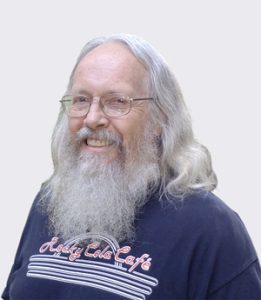CV’s First Inhabitants – The Neighboring Villages of Tujungna and Hahamongna
Last week I talked about our local village of Wiqangna. Historically it is described as being in La Tuna Canyon, although no archeological remains have ever been found. I took a guess that the site of today’s Verdugo Hills Golf Course may have been a likely spot.
The only artifacts found in CV that we know of are a grinding mortar (for grinding acorns) that was found in the late 1800s by pioneer Herbert Bathy. It was found up in Pickens Canyon. The natives moved around seasonally, retreating up into the canyons in the heat of summer in the same way that we today might spend time camping at higher elevations in the summer. It makes sense that the Wiqangnan villagers would camp up in the cool reaches of Pickens Canyon when it got hot.
We also hear anecdotally of kids finding arrowheads around the Indian Springs Resort in the ’40s and ’50s. Indian Springs, where Vons and CVS Pharmacy are today, east of Montrose, was a small canyon with a spring. It was well-watered and had a thick grove of oak trees. Animals would have been attracted to the spring, so it would have made a good spot for hunting, and it would have been an excellent spot for a seasonal campsite. Of course, that’s all buried under 70 feet of fill dirt today, paved over for a parking lot.
But there were well-established villages on either side of our valley, with archeological data to back them up. To the west, the village of Tujungna is the most robust archeologically. Numerous archeological sites have been found on the north side of Big Tujunga Creek, from the Hansen Dam area up to just past Angeles National Golf Course. I don’t have the facts on all the sites, but I can profile a couple of them.

president of the Historical Society
of the Crescenta Valley and loves local history. Reach him at
lawlerdad@yahoo.com.
In 1945, a family was enlarging their garden at their home, located about where the 210 Freeway meets the north side of the Big Tujunga Wash. As they dug they began to bring up fragments of large stone bowls. To their credit, the family contacted the Southwest Museum, which excavated about 35 feet of their yard. A rich collection of village material was unearthed, most just a few inches below the surface. Soapstone bowls, shell beads, stone knives, gaming pieces and whale bones were among the items dug up. Most notable among the materials were pottery shards from Arizona, dated between 600 and 800 A.D., indicative of the robust trade between tribes.
Larger excavations were associated with the 210 Freeway construction in the late ’60s, early ’70s, including the excavation of a few burial sites. In 1978, after the freeway was complete and the complex of village sites was covered by concrete, the site was placed on the National Register of Historic Places. Other village sites were excavated farther up the canyon after that.
Historically we know that about 90 people were living in one of the Tujungna village sites at first contact with the Mission fathers, and within 20 years the villages were completely abandoned.
For the village of Hahamongna on the La Cañada side, we don’t, to my knowledge, know for sure where the village or villages were; probably somewhere along the upper portion of the Arroyo Seco, with my favorite spot being the plateau that JPL sits on. But that’s just my imagination talking, with little to back it up. Although artifacts have been found all up and down the Arroyo, scattered village artifacts were found where the Brookside Golf Course is today. In 1938, a big Tongva cemetery was excavated just below Devils Gate Dam. Fifty-three skeletons and two cremations were dug up. (Just like we do today, some of the Tongva preferred burial while others were cremated.)
From Wiqangna, a two or three hour walk in either direction on the main road that went by the village put them in either Tujungna to the west or Hahamokgna.
It’s fun to imagine the rich social life and the robust trade our first inhabitants had there in the village of Wiqangna.
